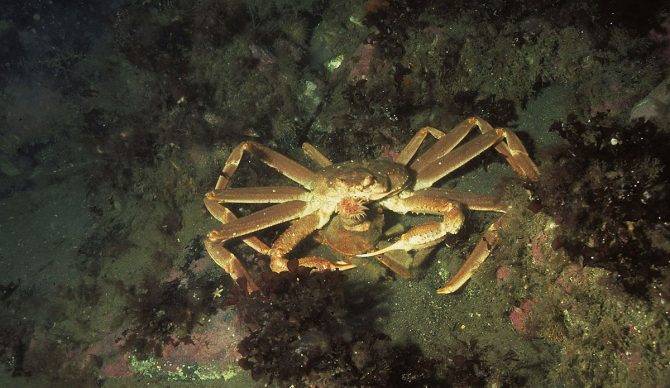
The snow crab population off Alaska dropped by a staggering 10 billion members. Photo: Wikimedia Commons
The last few years have been bad ones for snow crabs in the Bering Sea. Between 2018 and 2021, the population has almost entirely collapsed, dropping by around 10 billion. The loss didn’t go unnoticed — the Alaskan Department of Fish and Game closed the 2022-2023 fishing season in an attempt to let the numbers recover. Snow crabs are in high demand, since they’re delicious.
According to reports, rising sea temperatures are partly to blame for the staggering drop in the snow crab population. Snow crabs don’t like warm water and prefer to spend their time in the northern oceans. When they’re young, they require water hovering just around the freezing level to properly mature and tend to live in colder zones called cold pools. If temperatures rise, they often will starve or contract different fatal diseases.
When researchers first noticed that the snow crabs were disappearing, they thought that perhaps they were simply migrating to areas where the water was colder. They looked at Russian waters, hoping to find a boost in the population there, but didn’t find a corresponding rise. Now, a new study has found that a heat wave in the Bering Sea over 2018 and 2019 is the likely culprit. The crabs were forced into smaller, colder areas as the surrounding waters warmed, leading to a starvation event of unprecedented proportions.
The study, which was done by researchers at the National Oceanic and Atmospheric Administration (NOAA), says that snow crabs require more food than usual as the water temperatures increase. in 2017 and 2018, those cold pools shrank in size significantly, so the area the snow crabs could find food in dramatically dropped.
“The unprecedented caloric demands, coupled with a small area from which to forage relative to historical grounds, suggest that starvation likely played a role in the disappearance of more than 10 billion snow crab, similar to the marine heatwave-related collapse of Pacific cod in the Gulf of Alaska in 2016,” the team explained in its study. “The mortality event appears to be one of the largest reported losses of motile marine macrofauna to marine heatwaves globally.”
According to the researchers, the Bering Sea is one of the most vulnerable areas to climate change, which is a growing threat to fisheries. The snow crabs’ mortality event is a glaringly obvious indicator of just how quickly things can change.
“The Bering Sea is on the frontlines of climate-driven ecosystem change,” they finished, “and the problems currently faced in the Bering Sea foreshadow the problems that will need to be confronted globally”.

